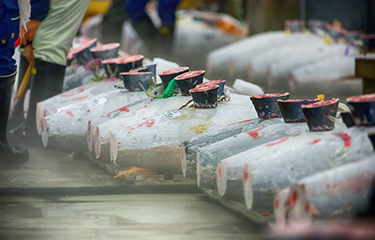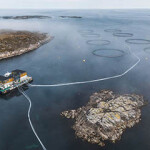IATTC approves Pacific bluefin tuna quota increase

The Inter-American Tropical Tuna Commission (IATTC) has approved a higher catch limit for Pacific bluefin tuna.
Based on IATTC Scientific Committee projections that indicated a 100 percent chance of reaching an initial stock rebuilding target by 2024, the IATTC approved a 15 percent increase in the catch limit for adults (over 30 kilograms) and no change for juveniles. The decision was made at IATTC's full commission meeting, which ran from 13 to 22 October.
For countries that do not have a large fish catch-limit, an additional 30 metric tons (MT) will be allowed in the Western and Central Pacific Ocean, and 200 MT in the case of the Eastern Pacific Ocean. A conversion factor of 0.68 can be applied to 10 percent of the limit for small fish. The idea behind the conversion is that the same weight in large fish is made up of a smaller number of fish, so fishing small fish has a greater effect on the stock. Countries without a large fish catch-limit can apply the conversion to 25 percent of the limit. Up to 17 percent of the catch-limit could be carried over to the next year if unused in the Western and Central Pacific, while the Eastern Pacific uses a biannual carryover.
The increase was first proposed last year by Japan and was approved in August by the IATTC Joint Working Group. At its previous meeting, the IATTC deferred action on the measure until it received a formal recommendation from the Western and Central Pacific Fisheries Commission, which was given earlier this month.
The IATTC and the WCPFC are closely coordinating their stances on bluefin management, so adoption by WCPFC will likely follow the IATTC's decision.
Additionally, the IATTC also approved a multi-year management plan for tropical tunas and vowed to make improvements to its requirements for electronic monitoring of vessels fishing tropical tuna. It also made a commitment to developing a harvest strategy and adopting minimum standards for port inspections. All states that receive tuna are now responsible for implementing standards that aim to ensure only legal products pass through their ports. The states will be able to receive capacity-development assistance for doing so.
However, the IATTC failed to make progress on rules governing the transfer of catch from fishing vessels to carrier vessels, a process known as transshipment.
The Pew Charitable Trusts, which has observer status at the meeting, opposed the increase in bluefin quota. The Pew Charitable Trusts Senior Officer Grantly Galland said it was disappointed in IATTC's bluefin decision.
“The new multi-year management measures for tropical tuna fisheries together with updated catch-limits on bigeye are a needed move toward ensuring the health of these important species,” Galland said. “However, IATTC must now follow through on its commitment to develop harvest strategies that will bring much-needed stability, predictability, and resilience to these fisheries.”
The Pew Charitable Trusts Senior Officer Dawn Borg Costanzi said she welcomed the news that the IATTC was tightening the standards for port inspections.
“The agreement of minimum standards for port inspections at this year's IATTC is welcomed and much-anticipated news. It will ultimately give members an effective way to prevent fish from illegal operations in the eastern Pacific from ending up on dinner tables around the world,” Costanzi said. “The measure ensures that member-governments are on equal footing and able to request help from each other to achieve implementation, and brings IATTC closer to the best practice shown by other RFMOs globally.”
Photo courtesy of Carl.Salisbury/Shutterstock






Share